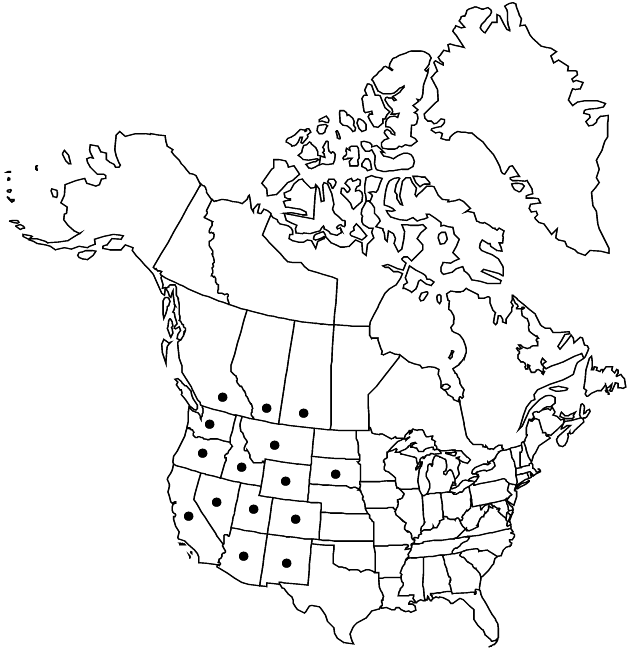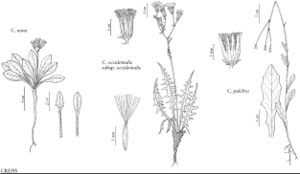familyAsteraceae
genusCrepis
speciesCrepis occidentalis
subspeciesCrepis occidentalis subsp. occidentalis
Crepis occidentalis subsp. occidentalis
Common names: Largeflower hawksbeard
IllustratedEndemic
Revision as of 19:50, 5 November 2020 by imported>Volume Importer
Plants 10–40 cm. Stems stipitate-glandular. Leaves 10–20 × 2–4 cm, sharply dentate to pinnately lobed (lobes dentate; distal cauline leaves stipitate-glandular). Heads 10–30. Peduncles tomentulose, stipitate-glandular. Phyllaries 10–13, sparsely to densely stipitate-glandular (lacking dark or long black setae). Florets 18–30. Cypselae golden brown. 2n = 22, 33.
Phenology: Flowering May–Jun.
Habitat: Arid rocky hillsides, sagebrush scrub
Elevation: 1000–2200 m
Distribution

Alta., B.C., Sask., Ariz., Calif., Colo., Idaho, Mont., Nev., N.Mex., Oreg., S.Dak., Utah, Wash., Wyo.
Discussion
Selected References
None.
Lower Taxa
None.
